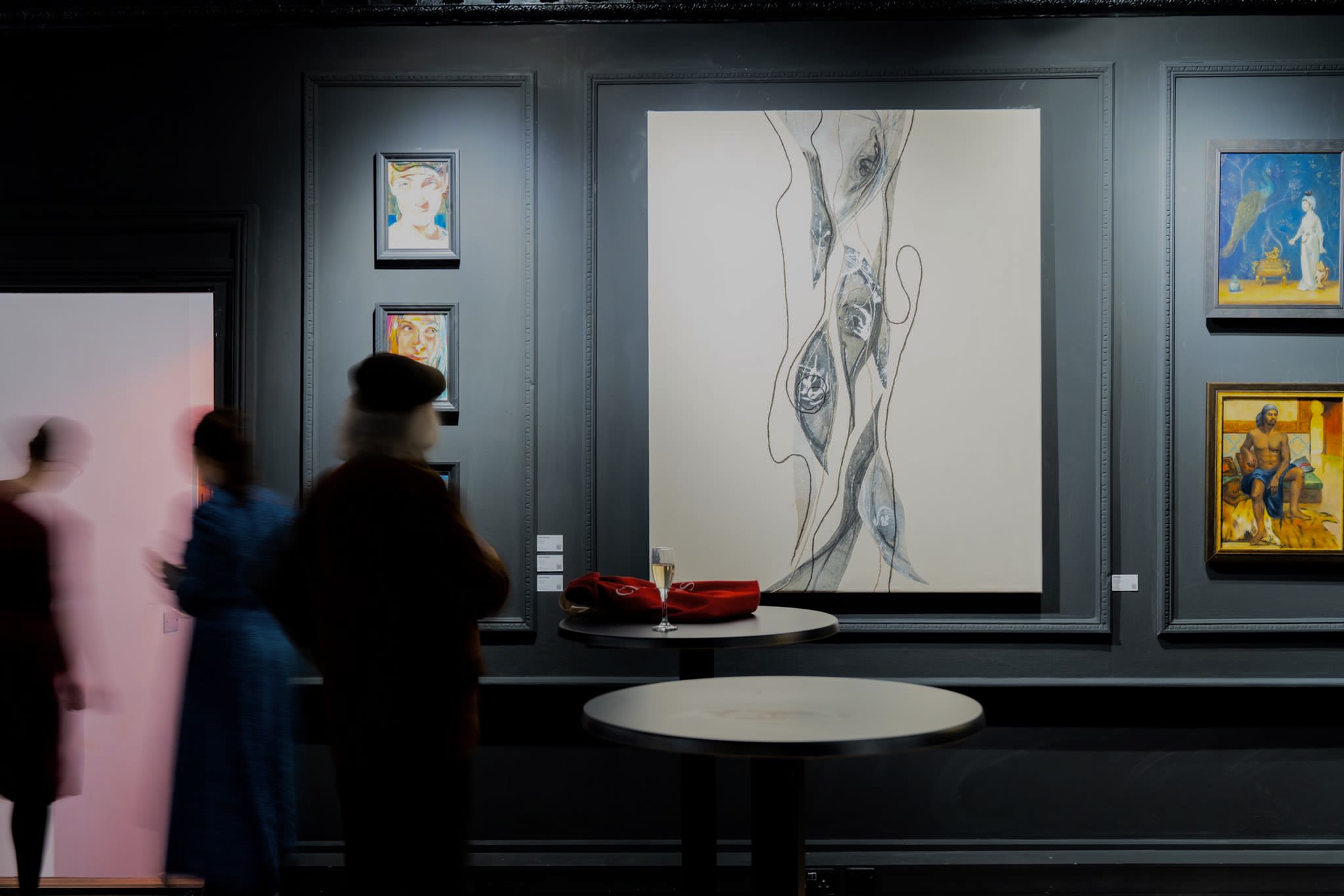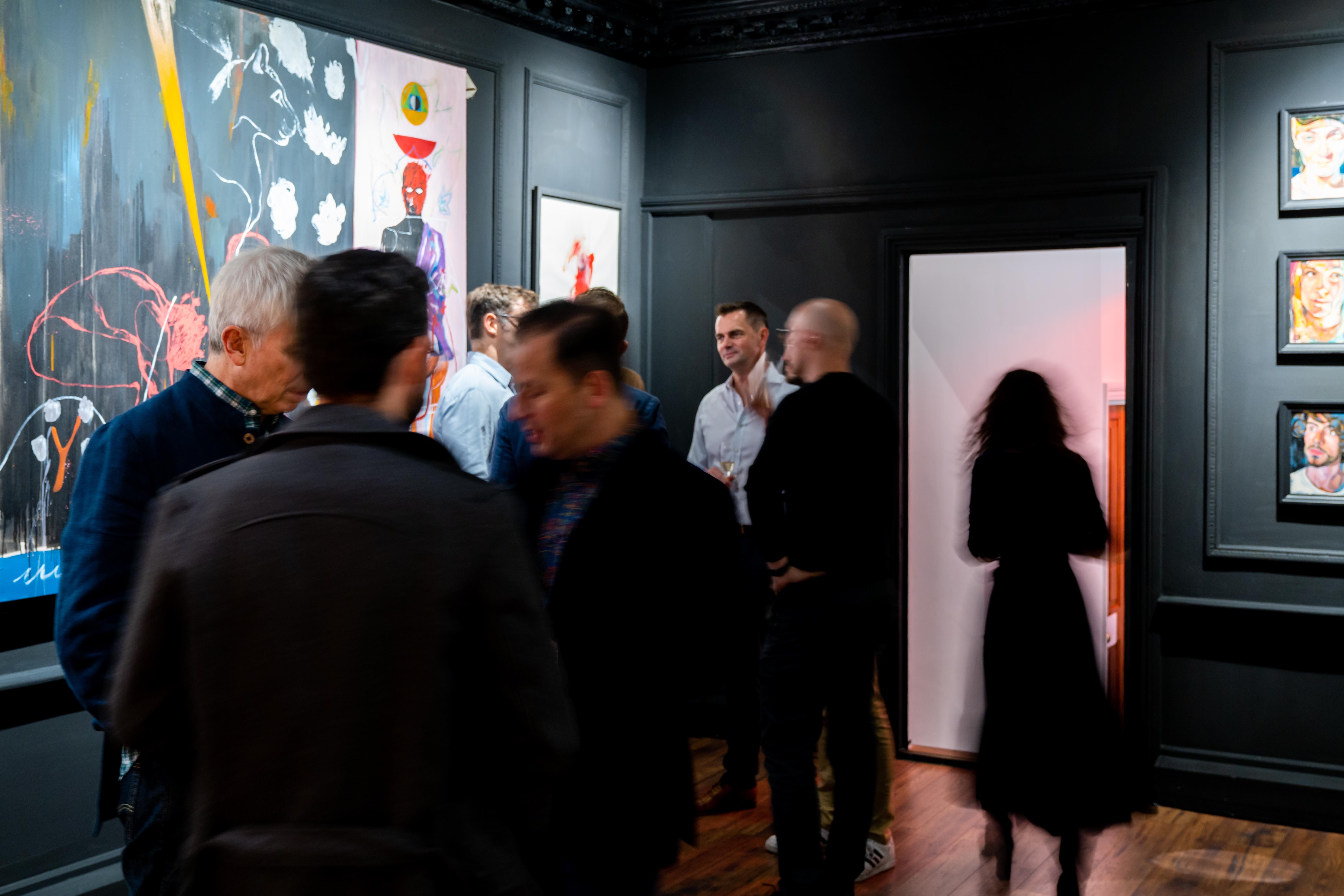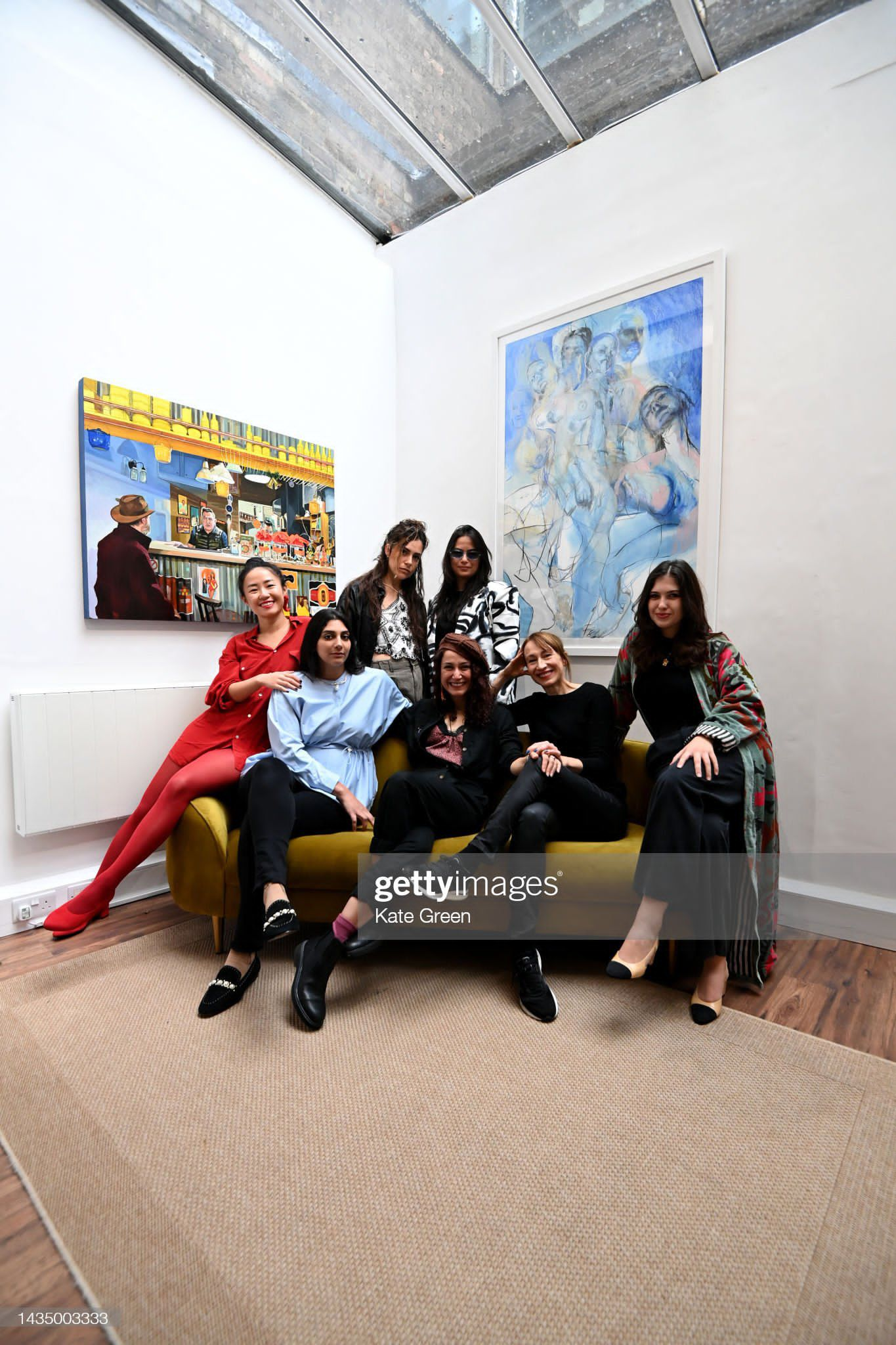Politics of Charm

During its first exhibition, Cicek Gallery and curator Vittoria Beltrame are bringing together seven artists: Abi Joy Samuel, Alla Samarina, Annam Butt, Berfîn Çiçek, Kay Gasei, Naila Hazell and Fía Yang in conversation with one another to showcase the core principal of the gallery: completely different styles, that put together highlight each other’s beauty and find resonance in their differences. From diverse ethnic backgrounds, having grown up in various environments, the artists find commonalities brought together by the gallery’s aim to understands them individually and collectively, cherishing them for the motif behind their practices and personas — successfully finding their own voice and expressing their identity.
A reflection of London under one roof, the charm each artist pours onto the canvases from their unique cultures, upbringings and experiences is a progress, driving more awareness to broader voices, which in turn increases the richness in our world. From abstract, figurative, cubism to classical — the artists will take the audience on a vibrant cosmopolitan journey from mythical references to orientalism.
Abi Joy Samuel is a multiple award-winning non-binary British Jewish artist, whose figurative works come from a process of “letting-go” and experiencing the moment. Life experiences have led them to their choice of subjects, that want to reflect on the ever-changing moments, which are often overlooked as one goes about one’s day. The focus on the medium of the charcoal is important in the artist’s practice, which allows them to create movement and the desired sense of ‘change’ which is at the core of the interpretation of the works. Their fashion illustration background is palpable as their works have a characteristic of focus on outlines of the body. While the impetuous lines reflect on the fleeting moment, the characters in their works want to reflect on societal implications and expectations human-beings face. This wants to consider the impact it has on the human condition. They often add a clown mask on the subject’s distorted faces to imply the various characters one impersonates in different social situations, directing a commentary on both the self and the whole.
Alla Samarina is a figurative British artist who, influenced by her interest and background in music, paints figures from real-life that express her “[...] interpretation of the essence of the subject.”
She works exclusively from real-life capturing the moment and the movements of her models, almost with the intention to go “under-their-skin.” Her process is highly instinctive and intuitive and once the picture has been laid onto the paper (her preferred medium) there is no turning back. She wants to present to the audience an exact snapshot of a fleeting moment which cannot be repeated, highlighting the continuum of life and letting the viewer imagine the before-and-after of the drawn episode. This wants to let the spectators reflect on the rapidness of the simple everyday moment that cannot be relived.
Annam Butt’s Classical Orientalism comes from influences of her classical art studies mixed with her Pakistani background. Her style is reminiscent of French Orientalist-Academicism painter Jean-Leòn Gerome. The elegance of her timed and thoughtful brushstrokes can be felt by the audience, bringing us back to times when art was used to represent life as it was, translating what is seen directly and faithfully onto canvas. Annam’s works bring representation of her cultural background into a classic art style, which often focuses on western standards of beauty, with different ethnic groups almost never portrayed as the subject of the paintings. Even more so, Annam underlines a lack of representation of artists from a similar background to hers. Annam’s paintings not only make the audience witness her skilful hand, but tell us stories of a place and a culture which is hardly represented nowadays.
Berfîn Çiçek’s imprint and influence from everyday life experiences the vibrant birth city of London brings, is blended together with her Kurdish background and architectural studies. She is greatly inspired by artists such as Picasso, painting with strong impactful lines from the Cubist period. The linearism is even more strongly noticeable when thinking about Çiçek’s studies in architecture, which we can see a great influence for the representation of the surrounding buildings of the protagonists of her paintings. Her works not only want to highlight deeply personal experiences, but also want to bring the audience to question aspects of our society, making a social commentary on themes such as the role of the woman and sexuality.
Kay Gasei’s works have a narrative that makes attentive use of symbolism and mythology, gifting the audience a sense of intimate mysteriousness due to the intricate details and embedded narratives to discover. The artist’s illustration-like practice focuses on the outlines of the characters, perhaps recalling the technique of Jean-Miquel Basquiat, Joan Miró or Willem de Kooning, from whom he draws great inspiration. His modern style is mixed with a classical take, influenced by his interest in mythology. In fact, the illustrations often see classical characters that comment on societal behaviours and current events. The “hedonists” recall Roman sculptures, that seek pleasure, and are antagonist to the all-seeing character whose eyes remain enlightened and wide-open — to symbolise the control one is subject to in urban living, conscious of the surrounding. Kay has won multiple awards, and has exhibited in solo and group shows alike in places such as Soho House and The Other Art Fair, with his works now found in private collections worldwide.
The figurative paintings of award-winning British-Azeri artist Naila Hazell, give a vibrant take on what can pass by as snapshots of daily moments. Her realistic, yet paintily works are brought to life from photographs of moments that capture Naila’s attention, ‘Naila’s Moment,’ then proposed on canvas with thick yet carefully-placed layers of paint. Despite the painting’s seemingly rapid imprint that allow them to have the impression of movement, (highlighting the passing moment and rapidity of time), her works have an evident level of detail and attention. Her paintings invite the audience to stop and reflect, remembering how every moment can be special even if seemingly unimportant. Her works can be found in private collections, and have been shown in a multitude of exhibitions such as with various shows at the Mall Galleries in London.
Fía Yang’s abstract paintings are an impactful representation of her Chinese roots with the use of ink, influenced from shan shui, mixed with the traits of her current Icelandic residence, with paintings that represent her resilience built from enduring life experiences.
The works have great similarities with Iceland’s landscapes, also due to the colours chosen by the artist, often black and white — recalling the ice. In some instances, Fía adds a touch of a passionate red in her practice, which, as a colour that has an abundance of significance, and highlights the strength she wants to transmit to the audience. Fía paints “power, the energy that powers the universe, the motivation that drives our civilisation to evolve, the strength that empowers us to overcome the darkness.”
The exhibition is organised by Cicek Gallery and is curated by Vittoria Beltrame. All text written by Vittoria Beltrame.
A special thanks to the sponsor of the entire exhibition, the international law firm Simmons+Simmons, for the support.



